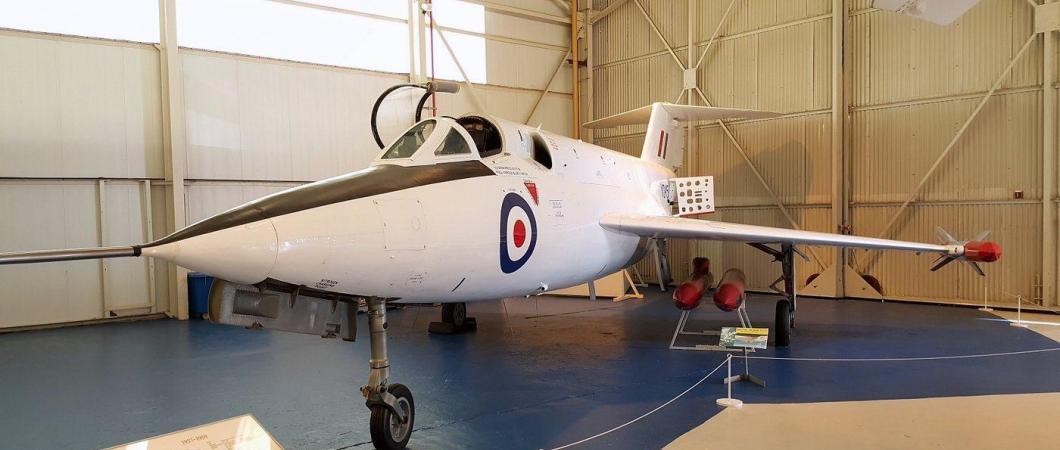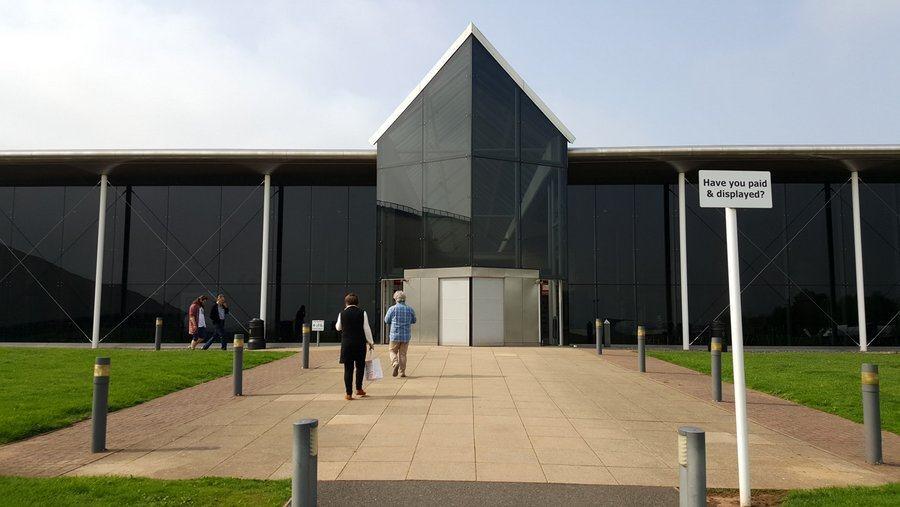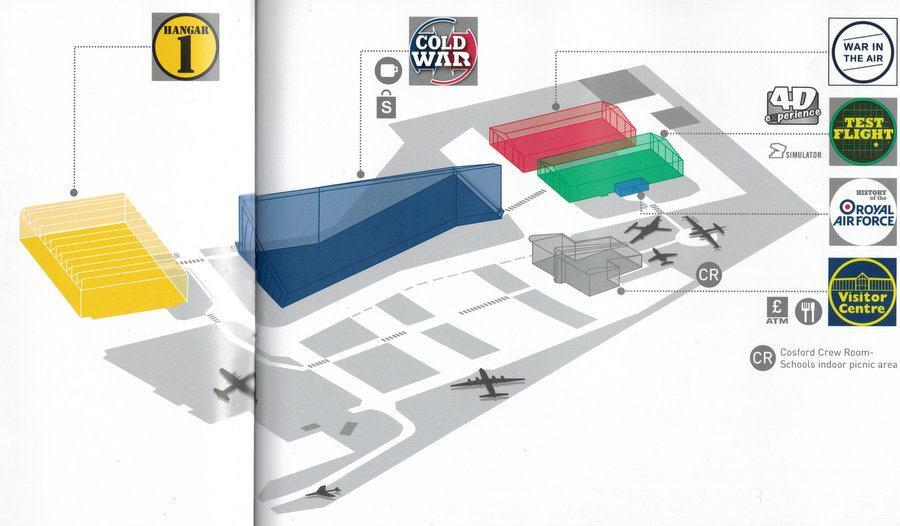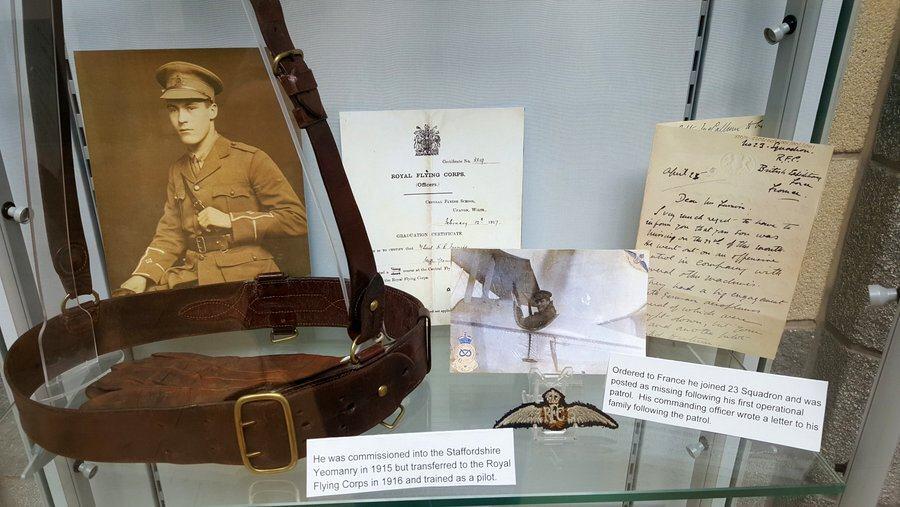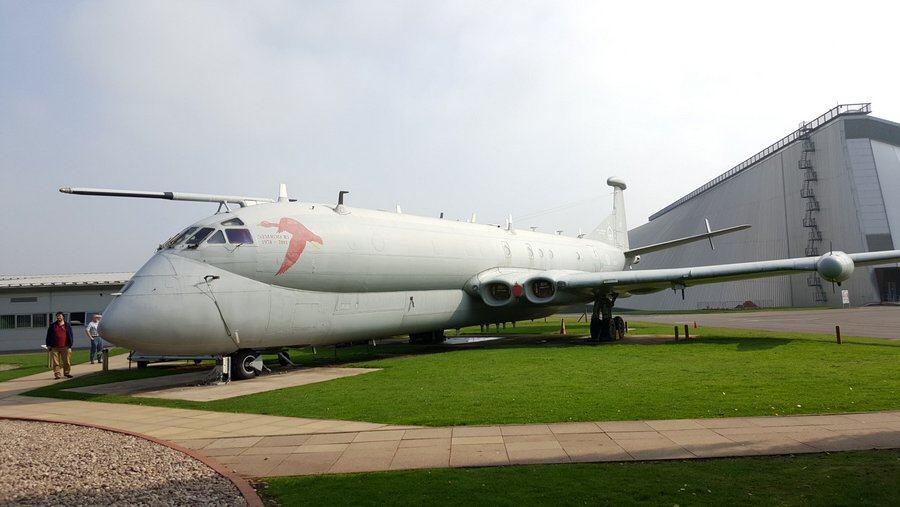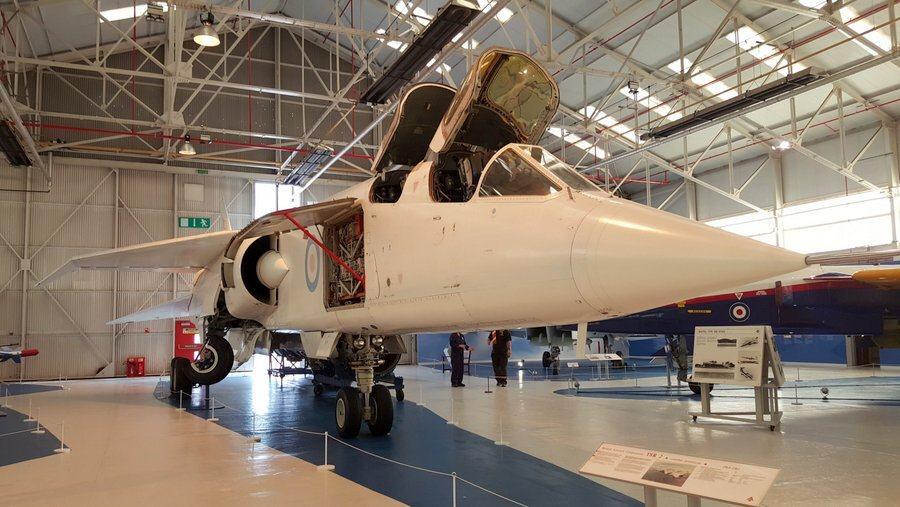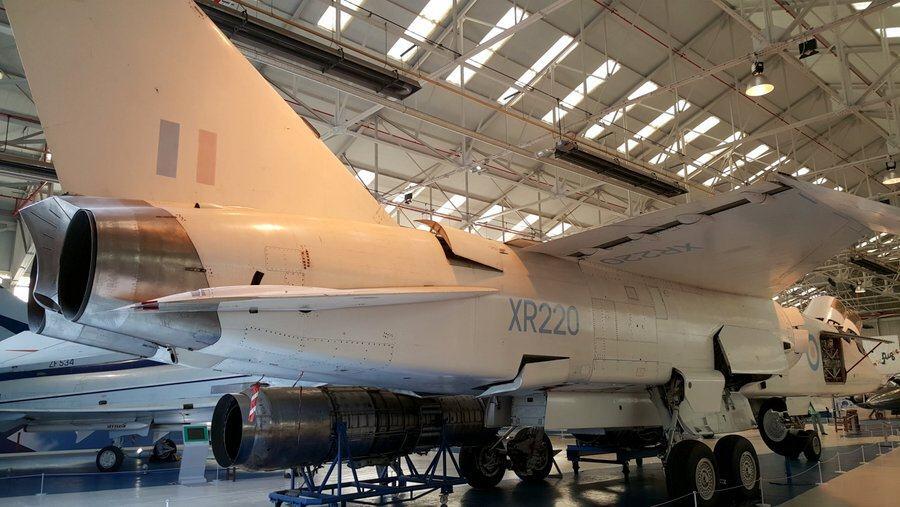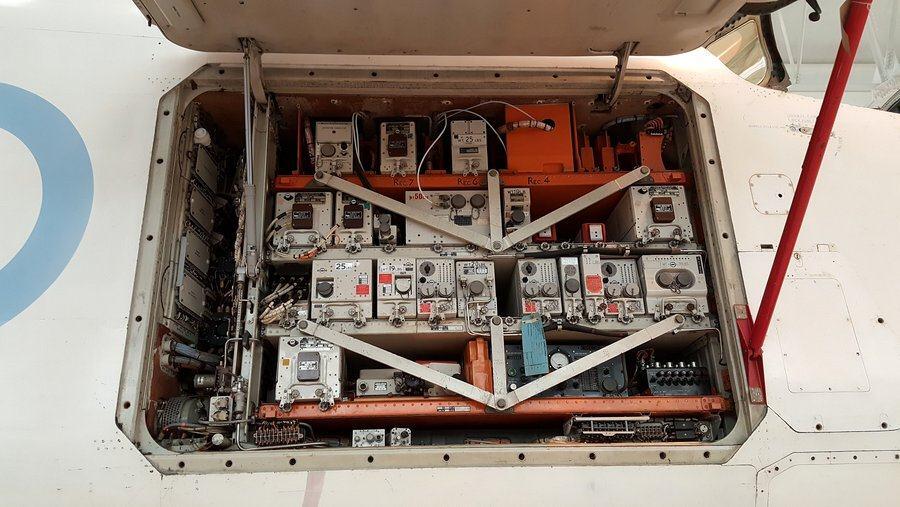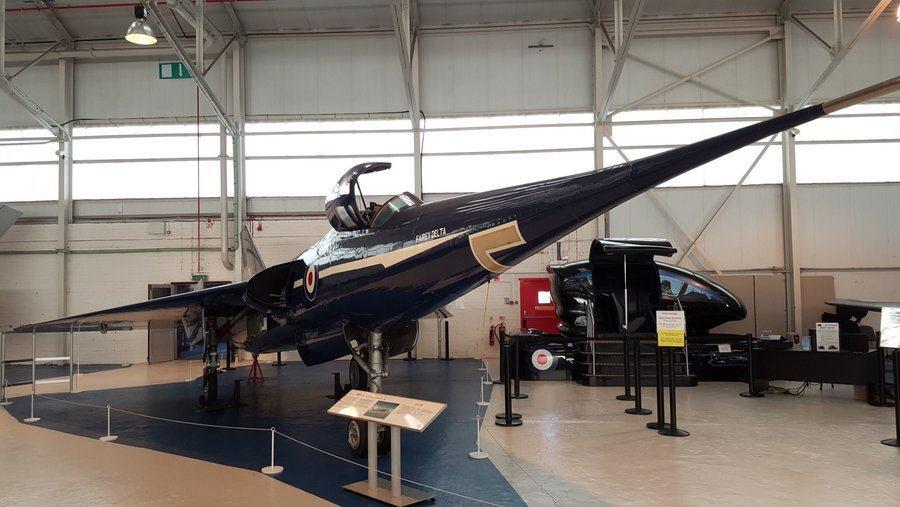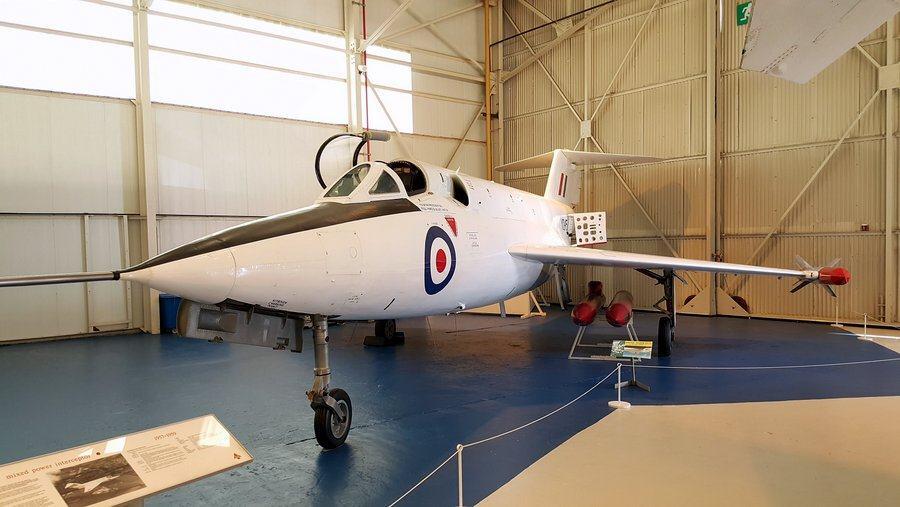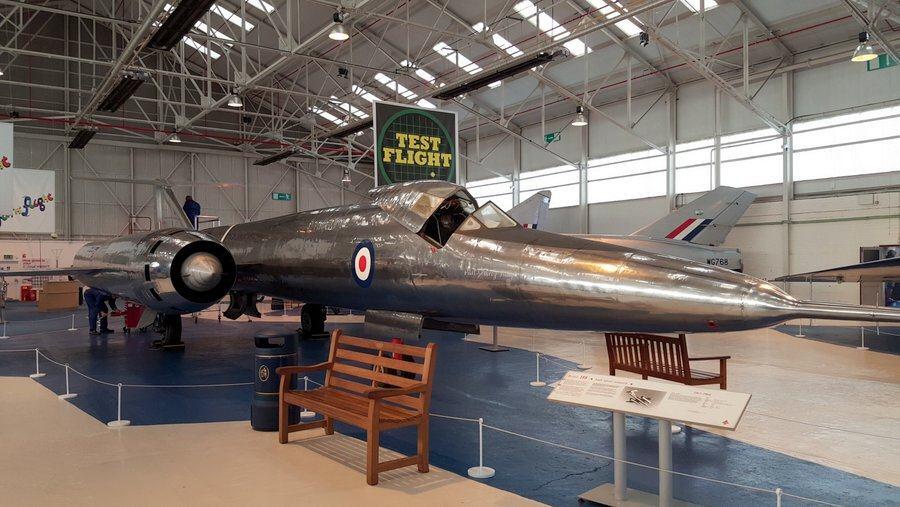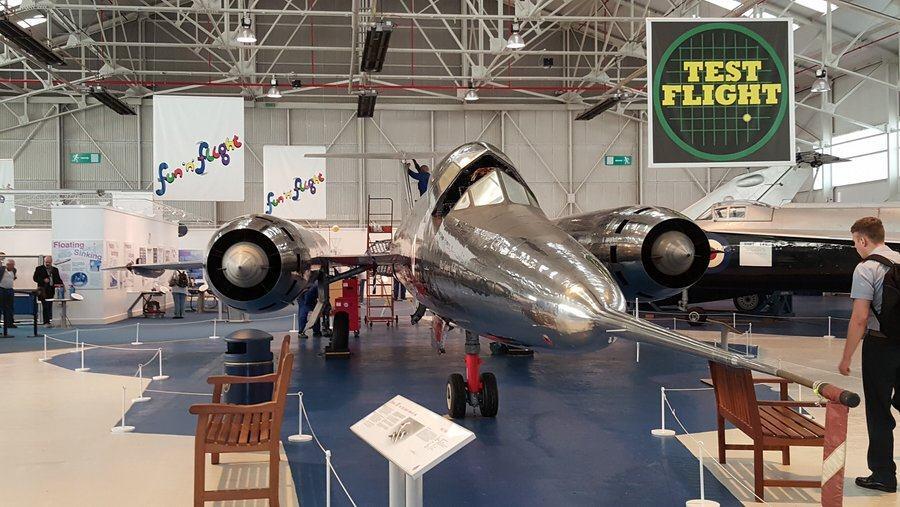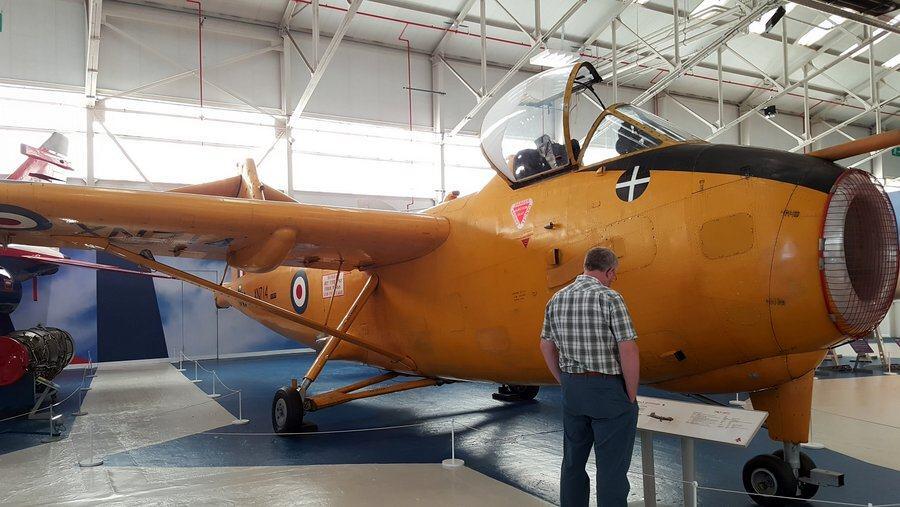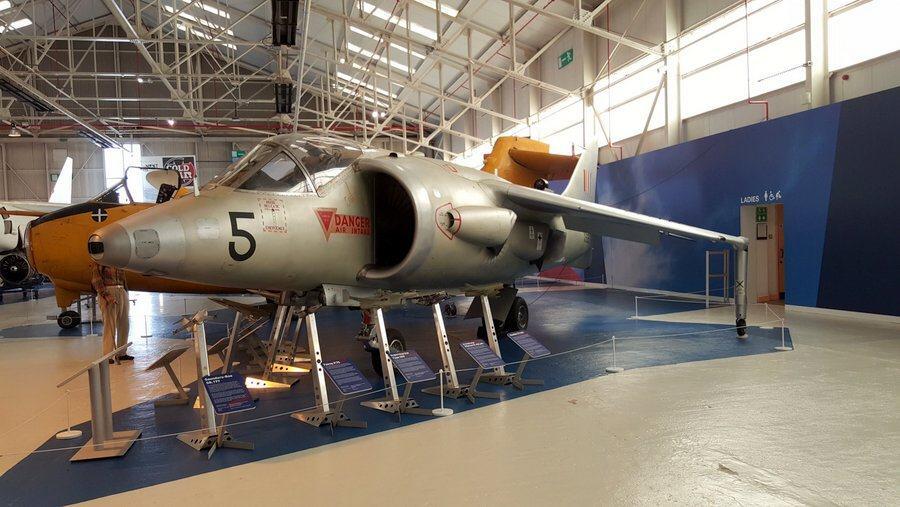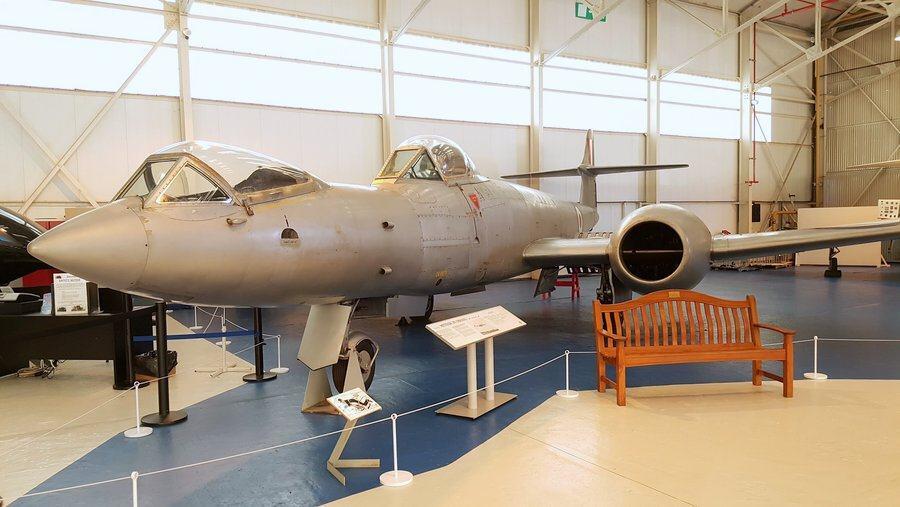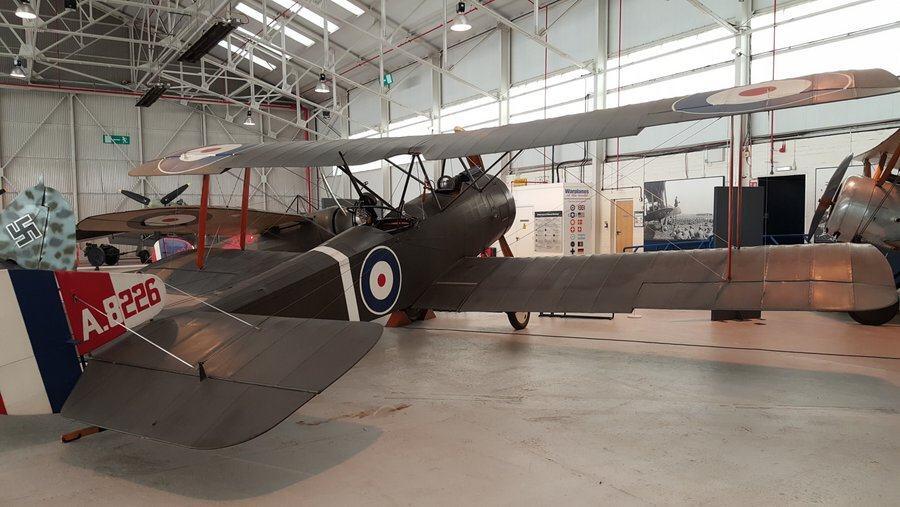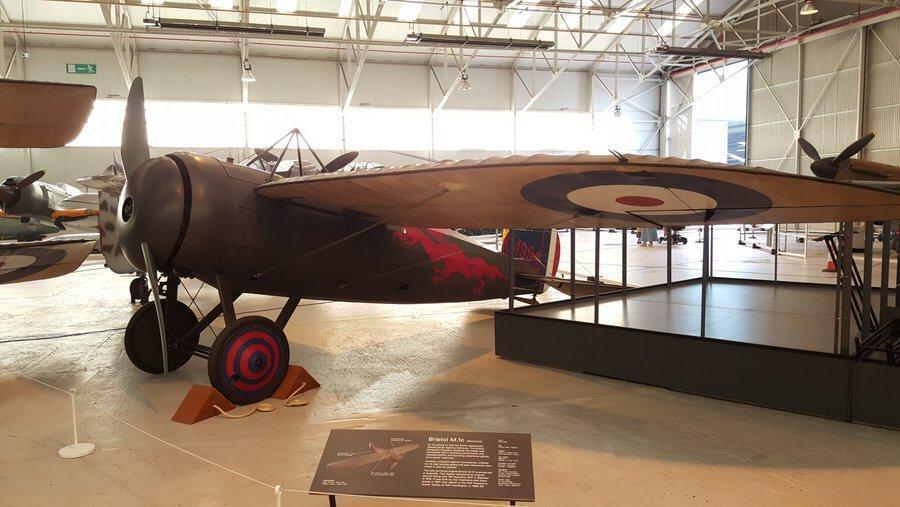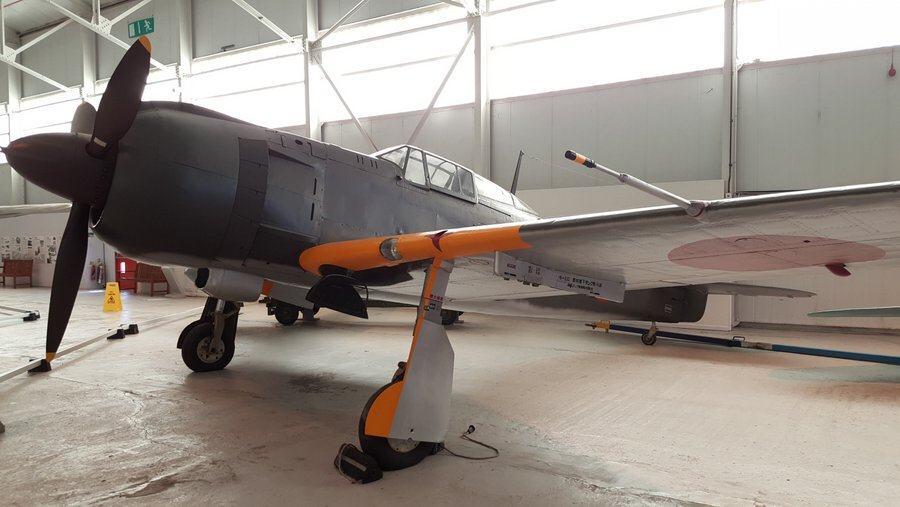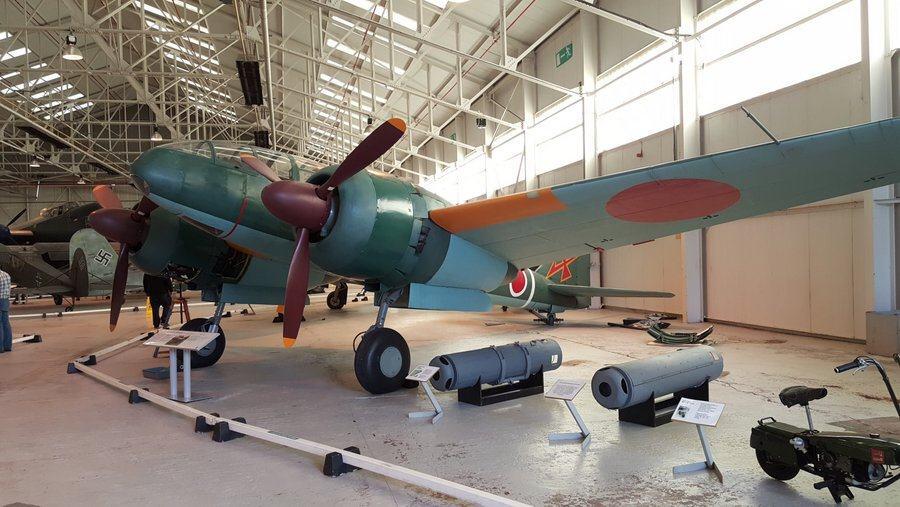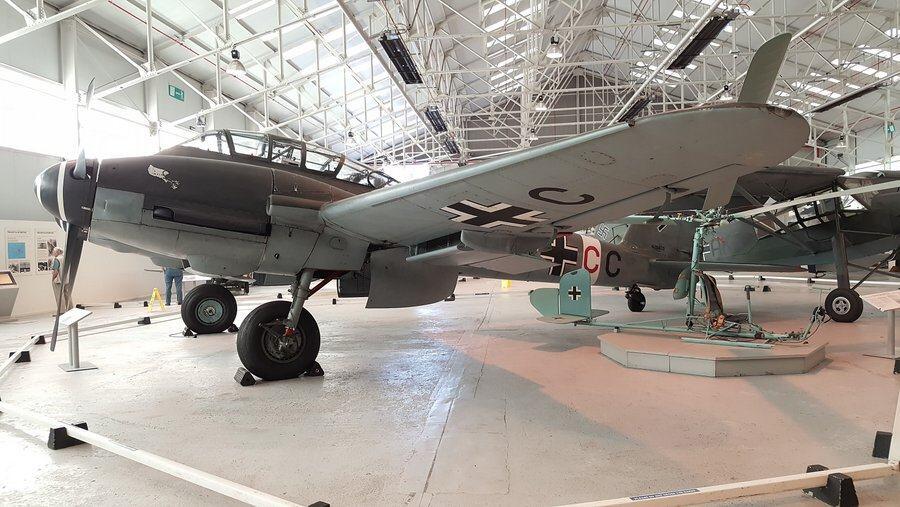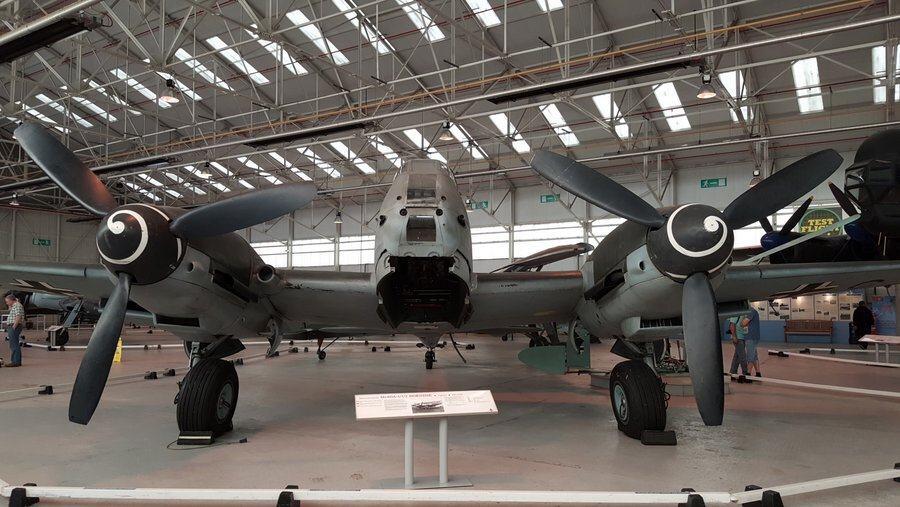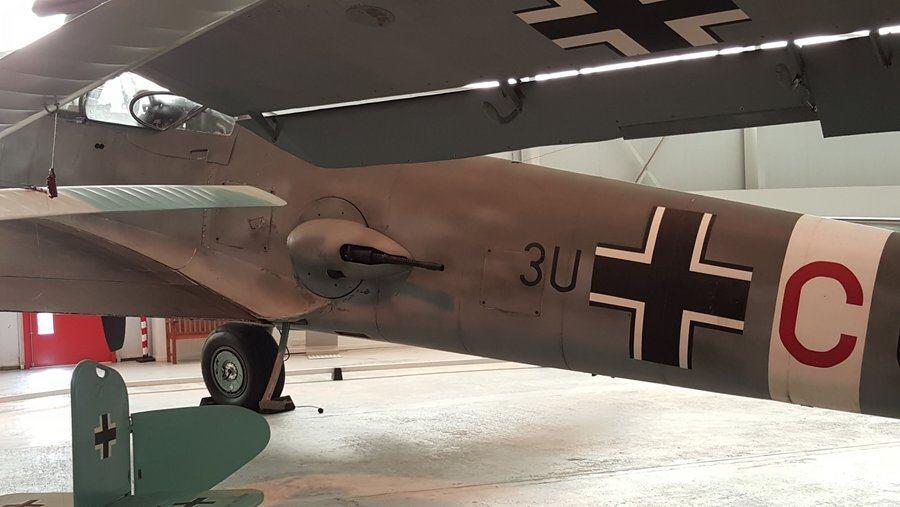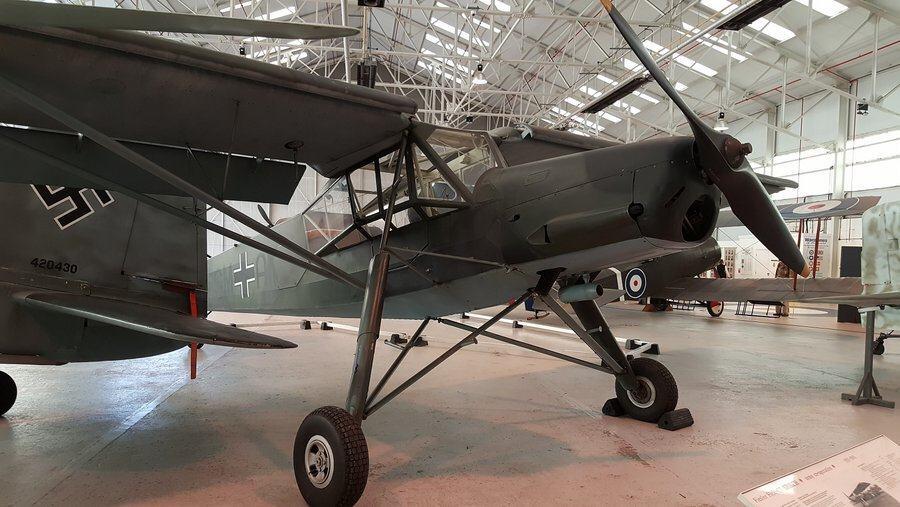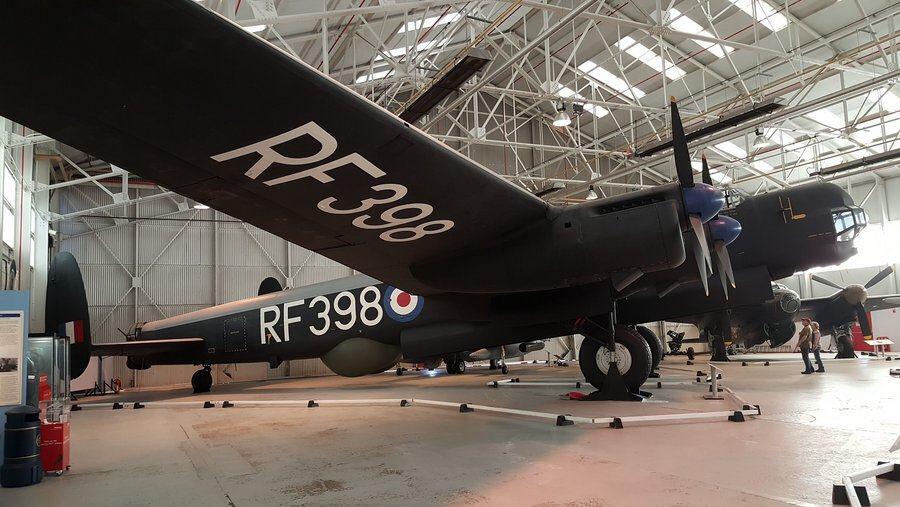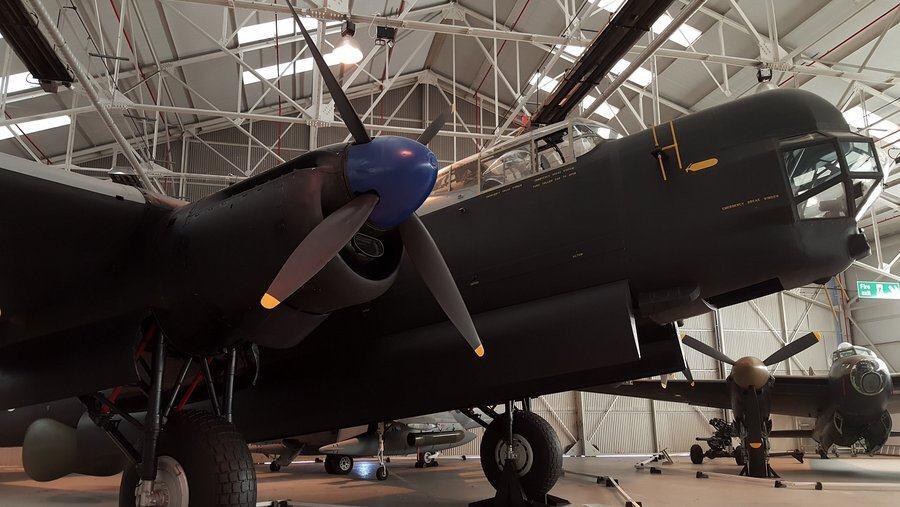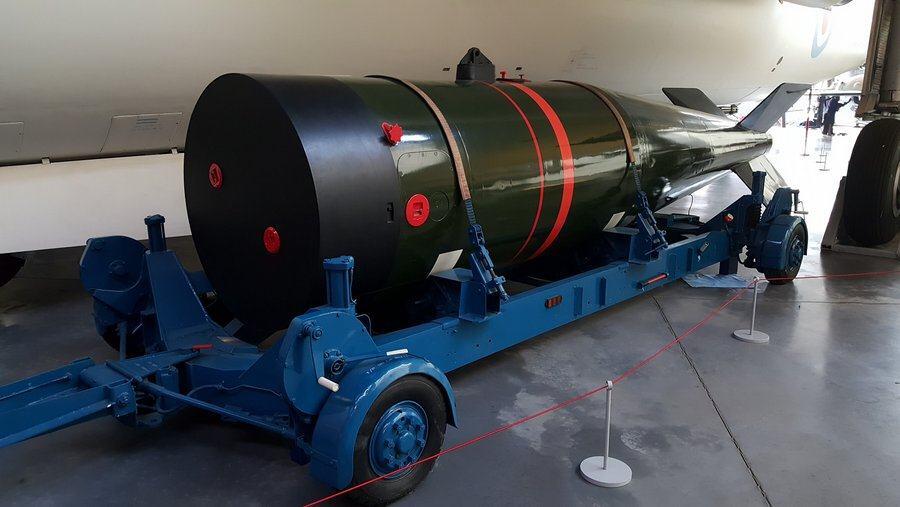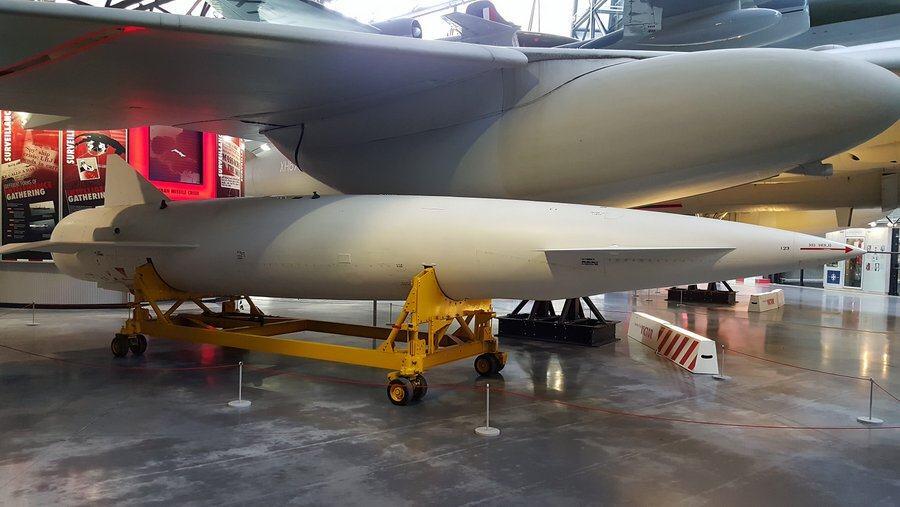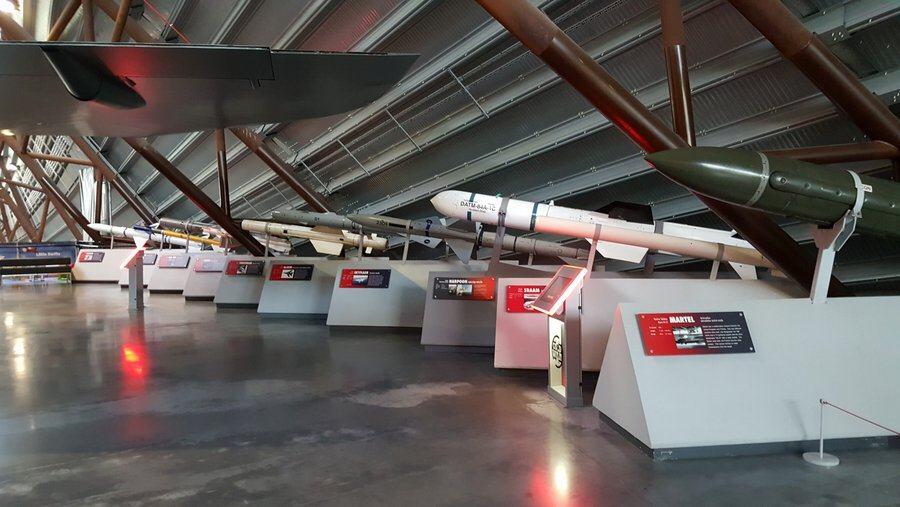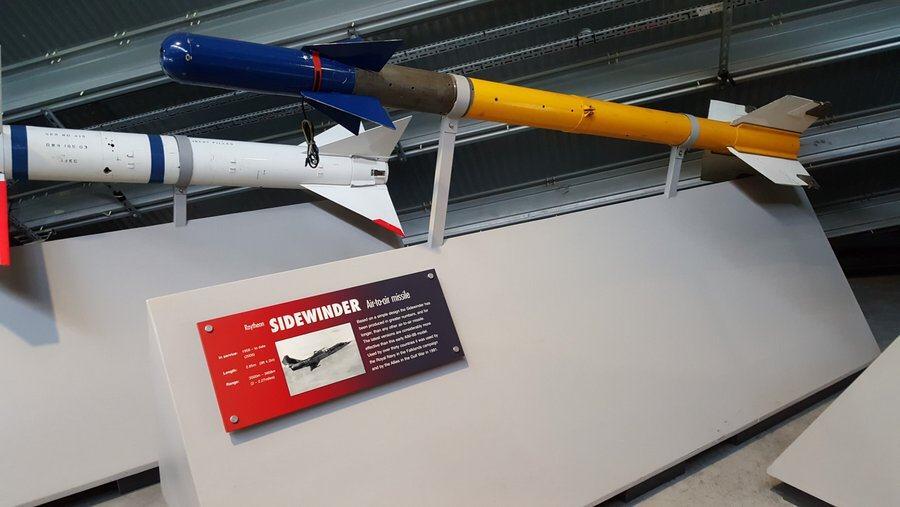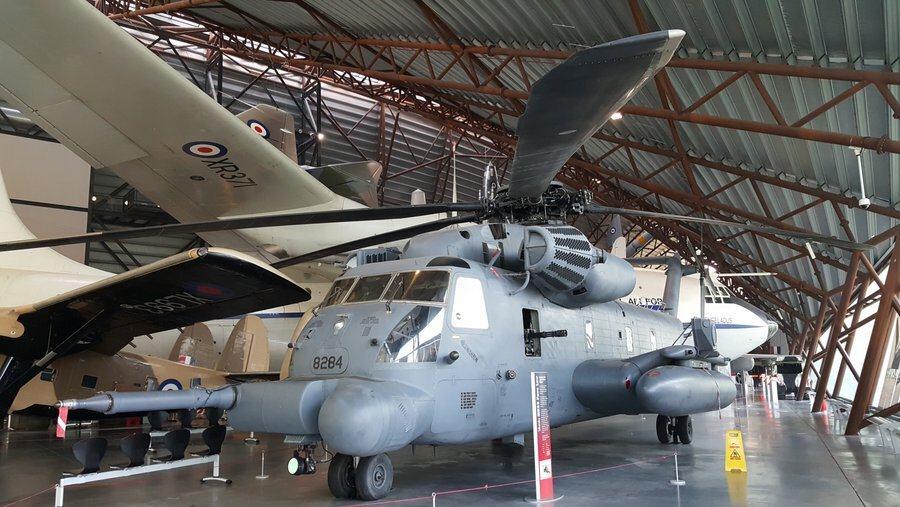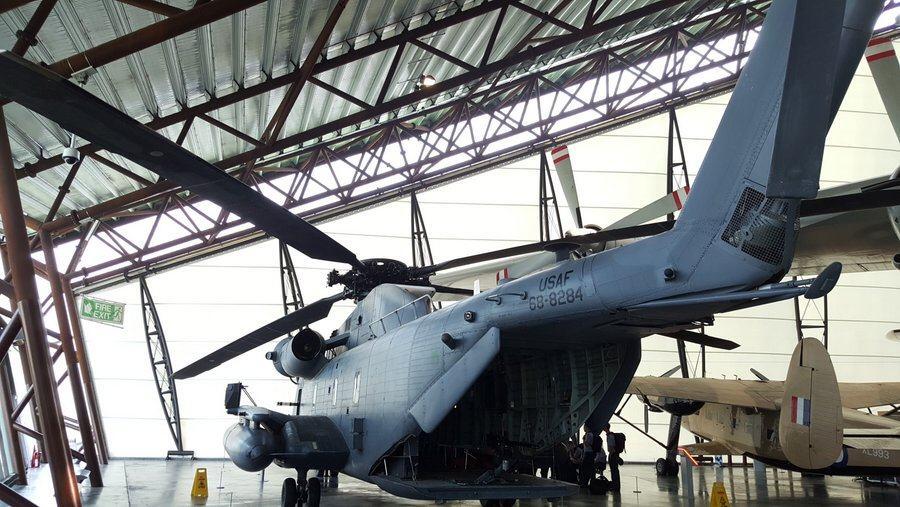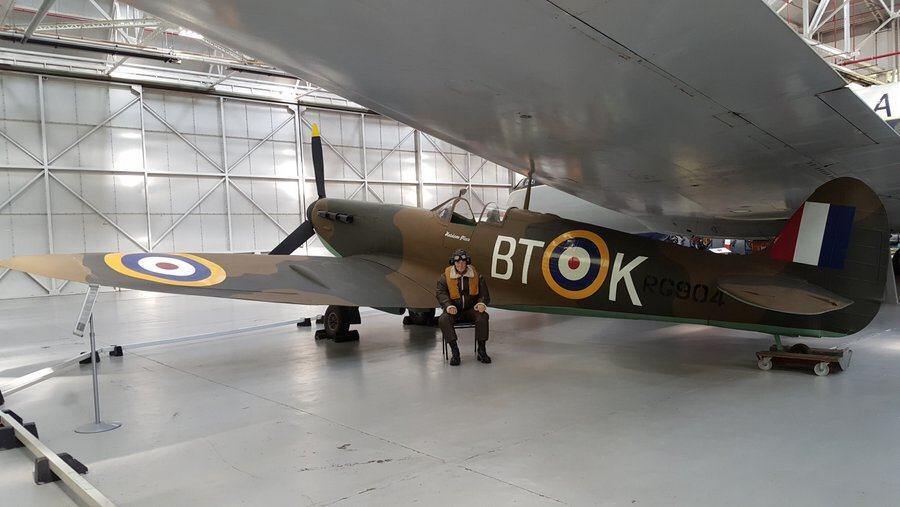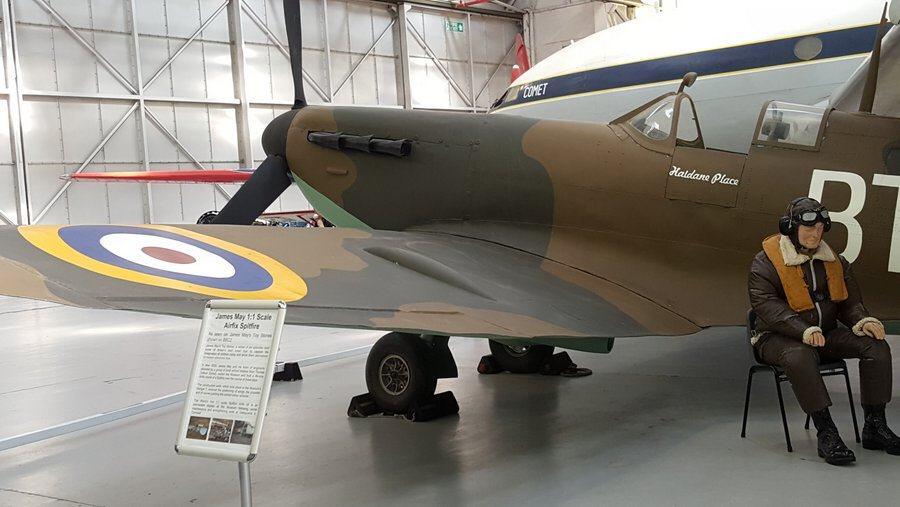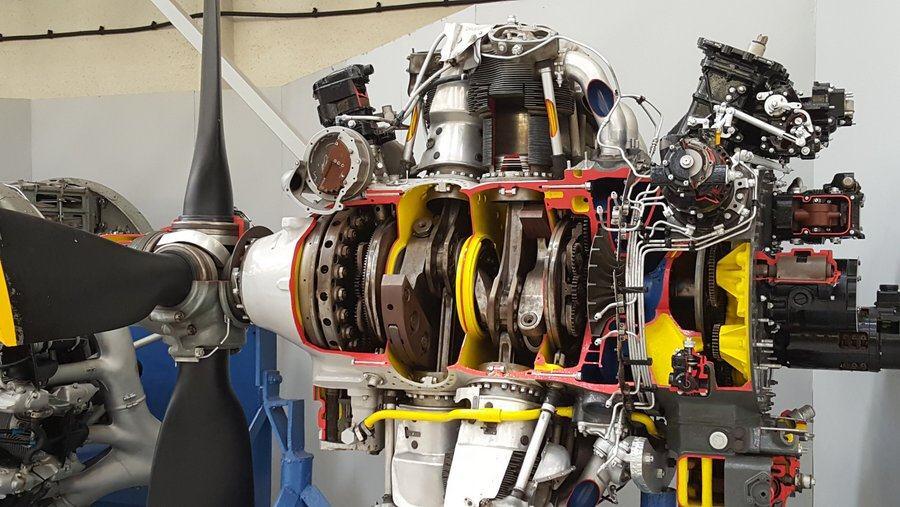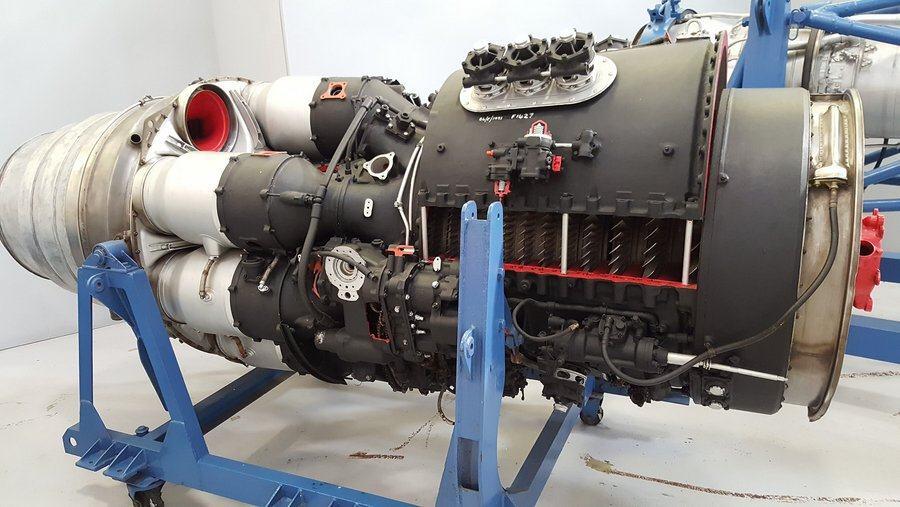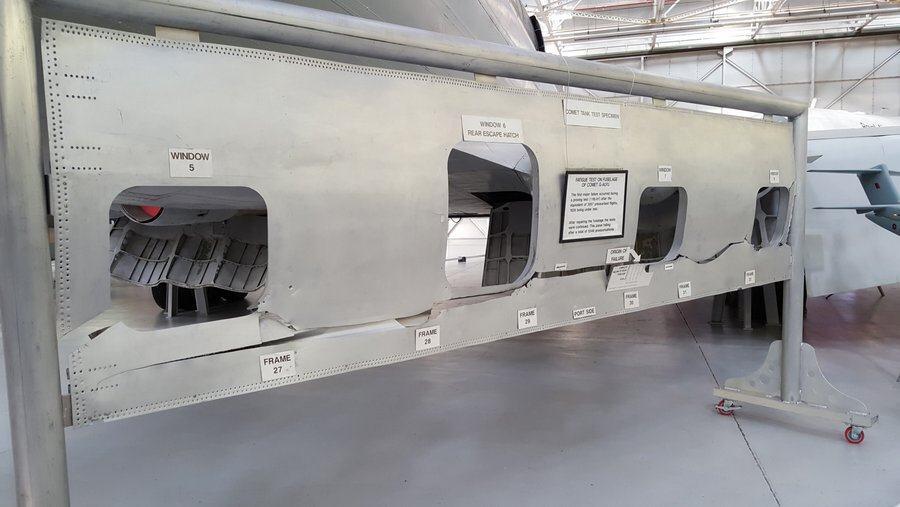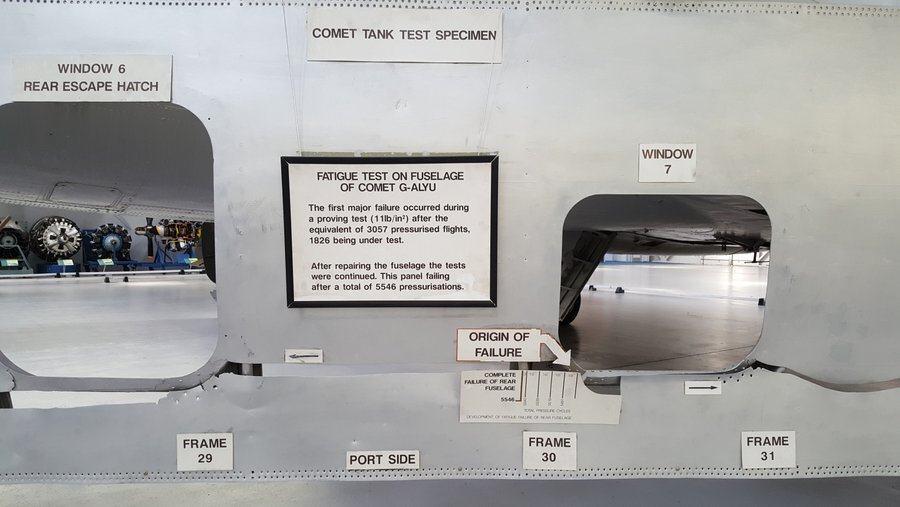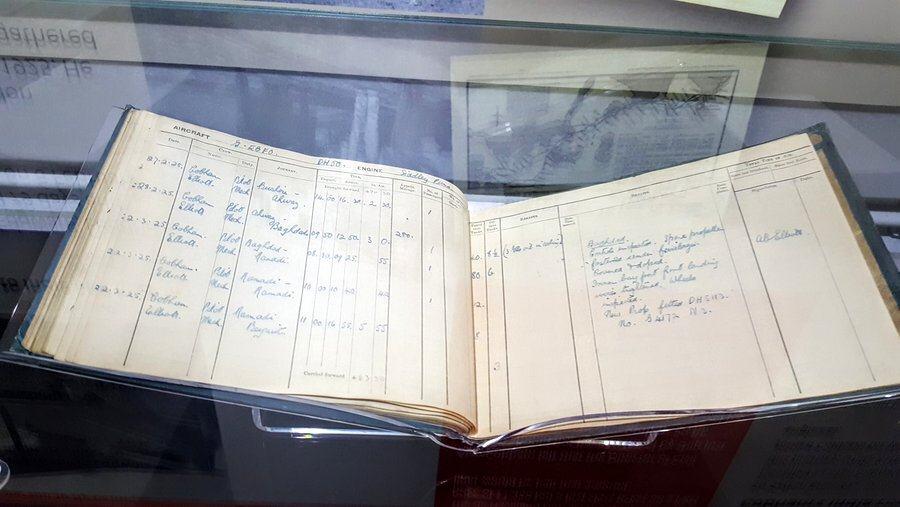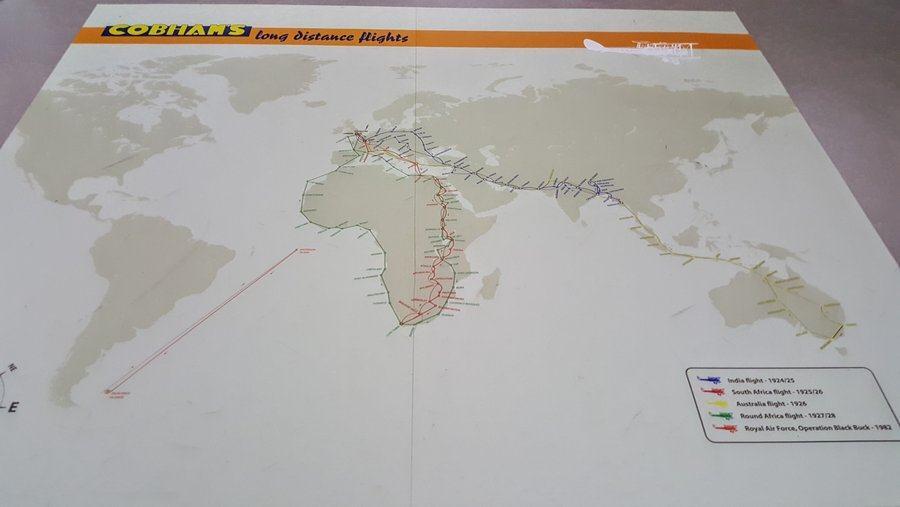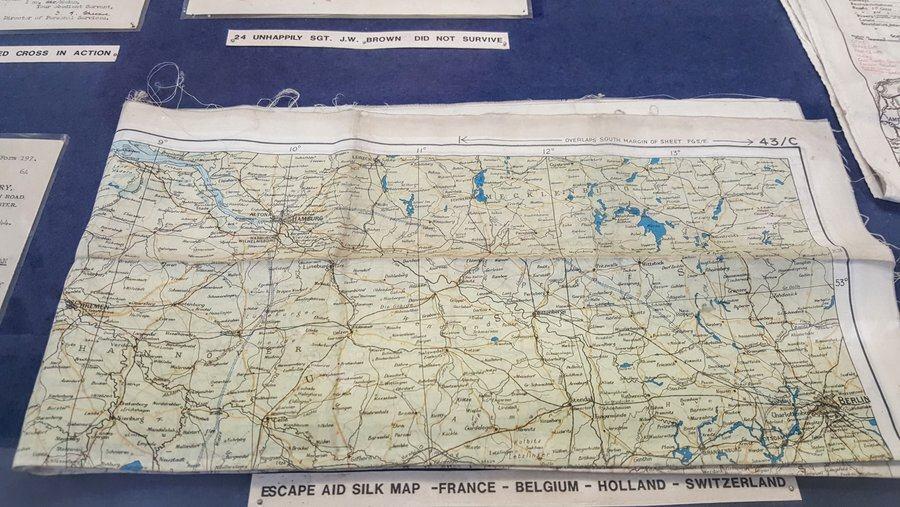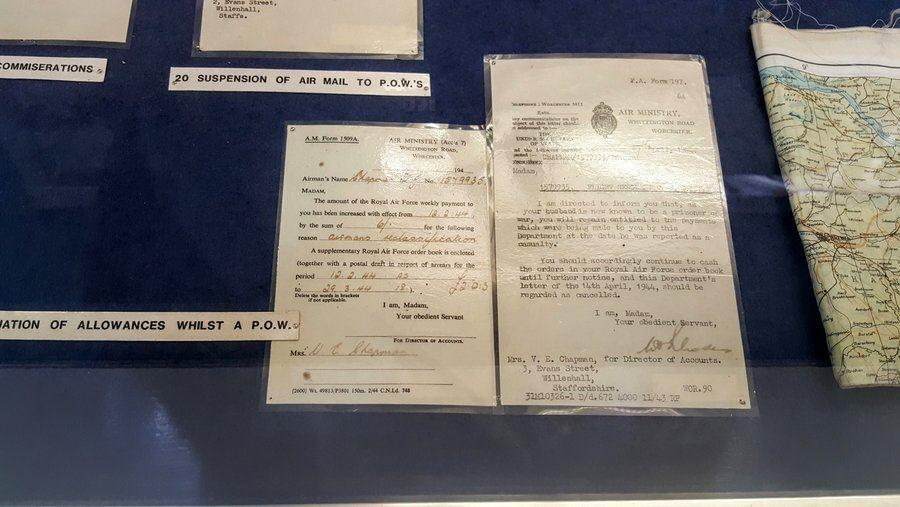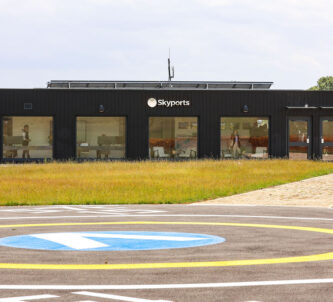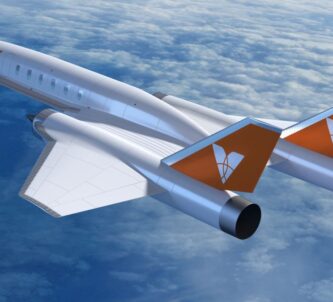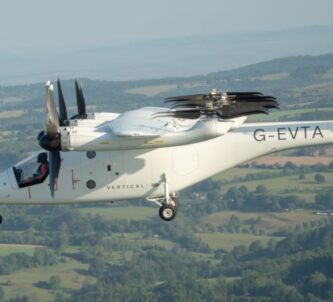RAF Cosford is still an operational airbase and most importantly, it’s the home of the Defence College of Aeronautical Engineering (DCAE), which sets the tone & style for the museum and gives it a unique atmosphere.
It’s not that in Hangar 1, for example, you’ll find loads of engines, failed sections from the infamous Comet 1 stress tests, or bizarrely, James May’s TV-show-assembled plastic model Spitfire at 1:1 scale. You’ll also find, among the 70 or so aircraft on display, some amazing test & research aircraft, some extremely rare/unique WW2 aircraft, and some of Britain’s most classic Cold War aircraft.
And it all feels as if it is collected here for a purpose, not just so the public can gawp at it, but as an academic archive for engineers and aeronauts. The airbase is also home to various RAF training squadrons and while I was visiting there were groups of air cadets from the UK & overseas exploring independently or being taken on lecture tours. This museum is a resource for the next generation of aviators.
So what’s here?
Well, there are five buildings that you can tour in a circular route, starting with the Visitor Centre.
- Visitor Centre – Reception, cafe, shop, etc.
- Test Flight – A hangar with some extraordinary and exotic test flight aircraft.
- War in the Air – A hangar with WW1, WW2 and newer warbirds.
- Cold War – This is the colossal (8,000 sq m) purpose-built display hangar opened in Feb 2007 to display the aircraft & equipment of the Cold War era.
- Hangar 1 – Transport & training aircraft, and engine collection.
1) Visitor Centre
Not much to say about this, except there is a small and poignant display of historic WW1 photos, letters and personal effects of WW1 pilot Kevin Furniss who went missing on his first operational mission, in the corridor leading outside to a pair of maritime reconnaissance aircraft on static display – a Nimrod R1 and a Lockheed Neptune.
Many aviation museums have aircraft parked outside. Usually large aircraft that they can’t squeeze inside. The truth is, aircraft deteriorate quickly when left out in the elements and they often look pretty shabby. Sometimes museums try to rotate them periodically, but it’s not so easy with the large ones. In this case the Nimrod looks a little weather beaten, but the Neptune looks in amazingly good nick!
2) Test Flight
There are some real beauties in here!
The legendary and larger-than-life TSR2 is here, dominating the hangar. There’s a TSR2 at IWM Duxford, but this one is displayed with an engine removed and its avionics hatches opened so you can see the clunky 1960s components.
There are three beautiful and slender historic aircraft here.
The Fairey Delta 2 was a research aircraft from the mid-fifties designed to help us Brits catch up to the Americans on supersonic flight.
The super elegant Saunders-Roe SR53 mixed-power (rocket & jet) interceptor from the late 1950s. Hands up all of those who built the Airfix kit!
The pencil-thin Bristol 188 high-speed research jet from the early 1960s
There are also a couple of uglies!
Interesting uglies! Take the Hunting H126 research aircraft from the early 60s, designed to fly at low speed (32mph) by using its “jet flaps” – ducted downward thrust from the main engine. Hmmm, sound familiar? To jog your memory, nearby there’s a Hawker Siddeley Kestrel, forerunner of the Harrier jump jet.
UPDATE (07/07/2024) The museum’s Gloster Meteor F8 Prone, built in 1952 for the RAF Institute of Aviation Medicine to test the advantages of a pilot lying prone instead of sitting up, was also on display in this hanger. It is currently on loan to the Newark Air Museum.
3) War in the Air
This hangar, next door to the Test Flight hangar, has some unexpected rare treasures.
As you walk through, it starts off with a couple of WW1 aircraft – a Sopwith Pup, a Sopwith Strutter and a replica Bristol M1c monoplane, which I don’t think I’ve seen before – surprisingly elegant. And surprisingly quick (209 mph) but apparently unloved by pilots for its high landing speed, and restricted downward vision; they were used to being high above the lower wing of a biplane and set back from it. The problem was addressed by cutting holes in the wings! (See photos below)
Then we get into the WW2 stuff, including all the standard exhibits seen in many other aviation museums; Spitfire, Hurricane, Mosquito, Focke-Wulf 190, Messerschmitt ME163, etc.
But in among them are some rare jewels.
“Wait, that’s a Kawasaki!” I thought.
It was, but not the Ki 61 Hien that I was thinking off. Instead the Ki 100 ¹, which was a far superior machine and extremely rare given that it represented a last gasp for the Japanese air force. It’s first flight was in Feb 1945, so there were only a couple of hundred in service by the time of surrender in August. This one is now the only Ki 100 in existence. Details here.
And next to it, another legendary Japanese aircraft from WW2 – the Mitsubishi Ki 46 Dinah – a very fast twin-engined high altitude reconnaissance aircraft. Again, this one is the only surviving example.
And there’s more, and another case of mis-identification on my part. “Blimey! A Henschel 129,” I thought. It wasn’t/isn’t. It’s a rare Messerschmitt ME 410 Hornisse.
The Me 410 was a continuation of the Me 110 ‘Destroyer’ range. Messerschmitt stopped production on the 210, which was rubbish, and jumped straight to the Me 410, which entered front line service in March 1943 as a light bomber, fighter (with limited success) photographic reconnaissance and anti-shipping aircraft. The unusual feature to look for are the remote-control barbette gun turrets on each side of the aft fuselage, operated by the gunner.
At the time I visited, Cosford may have been jiggling the space in the hangar ² because the Me 410 was packed tightly together with a Fieseler Fi 103 Storch (Stork) transport & scout plane, so you couldn’t really see either properly.
A shame because I don’t think I’ve seen a Storch before. If you read my stuff regularly, then you’ll know I like aeroplanes that are clearly & specifically designed for one role in an ‘I don’t care what I look like, I do this job’ way, Eg. the A-10 Warthog, or the Breguet Atlantic. The Storch is one of those. It was designed to be an Army liaison aircraft; to travel with ground forces, spotting for artillery, evacuating wounded personnel, and transporting officers & equipment. To that end is has lengthy shock-absorbing undercarriage (giving it its name); extended cockpit glass for good visibility all round & especially downward; slotted wing surfaces for Short Take-off & Landing (STOL); and fold-back wings so it can be towed behind a vehicle or on a trailer.
There are a couple of other rare/notable aircraft in this hangar:
An Avro Lincoln – you see plenty of Lancasters in air museums, but the Lincoln was the upgraded version (it flew higher & further) of the Lancaster, developed at the end of the war. A total of 607 Lincolns were built, of which there are only 4 survivors; one is in storage in Australia, and the other 2 are on display in Argentina.
The FMA IA 58 Pucará ground attack aircraft, one of only three non-WW1/2 aircraft in this hangar. The Pucará was made famous when a number of Argentinian Pucarás turned up on the Falklands in 1982.
National Cold War Exhibition
The £12.5 million National Cold War Exhibition (NCWE) building (part funded by the Heritage Lottery Fund – well done guys!) is a huge building designed to show off the airborne weaponry of the 40 year standoff between the West and the Soviet Union. It’s the only place where all three of the UK’s V-force bombers are displayed together – the Valiant, Victor & Vulcan.
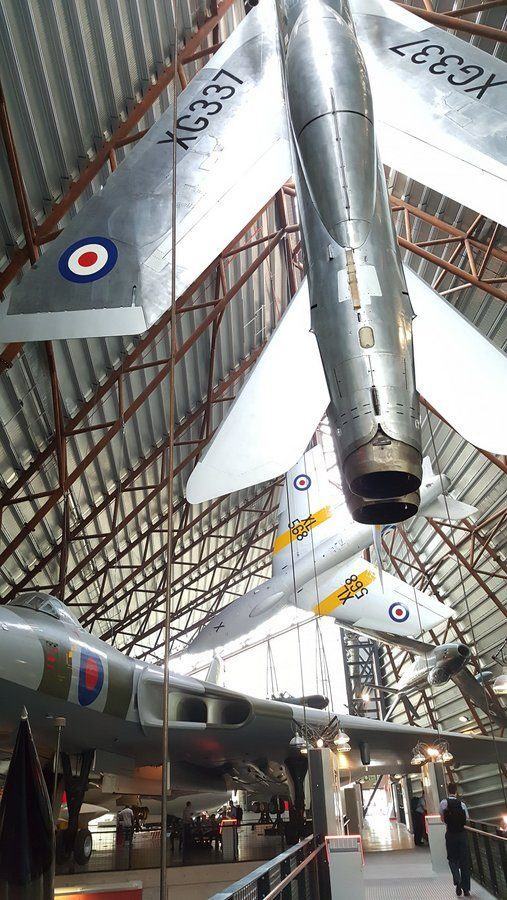
It’s an innovative building designed to show off some of the aircraft in an unusual way. So, for example, their BAC Lightning F1 is hanging vertically. It looks great… as if it’s climbing vertically to intercept Russian bombers straying near the air border, dramatic stuff! And I’m happy to see the Sabre F4, Hawker Hunter T7A & Armstrong Whitworth Meteor NF14 all airborne, but I’d like to have seen the Gloster Javelin FAW.1 close up, even though it does look elegant banking through the air! (Actually, there is one on the ground at IWM Duxford, but – and this is going to sound loony – I don’t like its garish red paintwork!)
There’s a lot of Cold War weaponry on display. It’s always a little chilling to stand next to a nuclear weapon, even an inert/practice version! Here, next to the Vickers Valiant that carried it, they have a Yellow Sun – the UK’s first operational thermonuclear bomb. It’s huge and not a little menacing!
Rather more elegant, though just as dangerous (both had a yield of 1 megaton), is a Blue Steel stand off bomb, carried by the Valiant and the Vulcan bomber. Once released, its rocket would shoot it up to 70,000ft (21,330m) where it would cruise at supersonic speed to its target up to 104 miles (166 km) away.
Less destructive but still lethal are the various missiles on ‘missile row’ (my name for it) – a line up of some of the more famous air-to-air and air-to-ground missiles of the Cold War era. Eg. The ALARM anti-radar missile (UK’s answer to the USA’s HARM), the Sidewinder & Sparrow air-to-air missiles, the Harpoon anti-ship missile and the Martel air-to-surface.
There are a number of other aircraft in the NCWE – a couple of MIGs (21 & 15), some transport aircraft – but the one I found the most interesting was the Sikorsky MH-53M Pave Low helicopter. These things are big & ugly and fall into my ‘I don’t care what I look like, I do this job’ school of design! I half expected it to snarl “who you lookin’ at?”. The job it did, was covert insertion behind the lines for special forces, and Combat Search & Rescue (CSAR). It was designed to fly long distances at low level, day or night, in good weather or bad. A very bad boy… or good boy, if you were a downed pilot behind enemy lines!
One small thing to mention. It turns out the £12.5 million National Cold War Exhibition building suffers from Sweating Slab Syndrome (SSS). On unusually hot days, like the one on which I visited last September, the heavy concrete foundation acts as a cold sink and the floors become wet with condensation. It’s a shame because there were large areas of the ground floor taped off for health & safety reasons, and there were some exhibits I never got to see.
Hangar 1
Hangar 1 has some quirky stuff in it.
Here’s where those engineering students come to look at the collection of aero engines – primitive, complex and game-changing; to admire (or not) James May’s lifesize Airfix Spitfire glued together in a TV programme by a team of Air Cadets with himself modelled as the pilot (as I recall they had a lot of problems stopping the heavy wings from drooping); and to look at the failed hull section from the famous Comet 1 (G-ALYU) pressurisation stress tests that were a landmark in Air Accident Investigation techniques.
The highly successful three-engined Junkers Ju 52/3M passenger/military transport aeroplane first flew in April 1932, which is how, before WW2, it was in British Airways’ fleet! It certainly made me look twice when I stumbled across it! (And yes, that’s one of those Mignet Flying Fleas parked in front – See Yorkshire Air Museum’s)
The hangar has a number of large transport aircraft in it, and somewhere, a collection of WW2 German Rockets & Missiles, but when I visited, quite a lot of the hangar was roped off and I couldn’t get to see them.
However, there are a couple of exhibition areas on the ground floor and the balcony on the entrance side of the hangar that are very much worth seeing.
On the ground floor there is a room dedicated to the extraordinary pioneering exploits of Sir Alan Cobham in the 1920s. He wasn’t just the first person to fly to India and back, in his De Havilland DH 50 biplane in 1924 (in fact he went further… to Rangoon, Burma). He went on to fly to South Africa, then around Africa, and to Australia. He created National Aviation Days to promote flying to the public and invented the early concept of in-flight refueling – quite a guy!
Up on the balcony is a moving exhibition of personal effects and letters of Flight Sergeant DJ Chapman, a rear gunner in a Lancaster in 61 Squadron who was shot down over Germany on 24 Feb 1944. The exhibits are mostly letters to his mother & wife that convey the poignant & mundane sequence of RAF officialdom: there’s the telegram telling his mother that he’d gone missing, then the official confirmation letter, then the application form from his wife to claim an allowance as the wife of a missing airman, and the letter from the Air Ministry confirming she will get 55 shillings & sixpence a week for 17 weeks.
All the while as you work through the display cases you don’t know what happened to him, but then, relief! Notification that he is alive and a Prisoner of War (POW), then desultory correspondence via the Red Cross, and a letter confirming the change in RAF allowance now that his status has changed! Nothing stops the clerks!
UPDATE – 30/06/2025: An article from Vintage Aviation News lists the latest additions, restorations and disposals at Cosford.
¹ RAF Cosford is the sister museum to RAF Hendon in London and periodically they like to redistribute their exhibits. The Kawasaki Ki 100 used to be in Hendon. It’s currently in Cosford. Similarly, Hendon’s Boulton Paul Defiant Mk1, Gloster Gladiator 1, and Westland Lysander III were moved to Cosford in November (2016) as part of the Hendon rebuilding project in preparation for the RAF Centenary celebrations in 2018…
² … so I suspect the ‘War in the Air’ hangar exhibits had been bunched up on one side of the hangar to make space for them.
Factbox
Website:
www.rafmuseum.org.uk/cosford/
Events:
The Annual RAF Cosford Airshow in June is well known. There’s plenty to see in the air, and of course, on the ground.
Getting there:
Royal Air Force Museum Cosford, Shifnal, Shropshire, TF11 8UP
Easiest to drive; it’s only a short distance from the M54 or A41. It’s a ½mile walk from the train if you come by train to Cosford, and even further – a mile – from the nearest bus stop! Cyclists will find it’s conveniently located on National Cycle Route 81 (from Wellington to Albrighton), and, should you want to, you can always come by air!
Price:
Free
However, there is a car parking fee:
0-3 Hours – £3.00 per car
3-8 Hours – £4.00 per car
Opening Hours:
Summer (Mar-Oct): 10am – 5pm
Winter (Nov-Feb): 10am – 4pm
Last admission is an hour before closing time.

